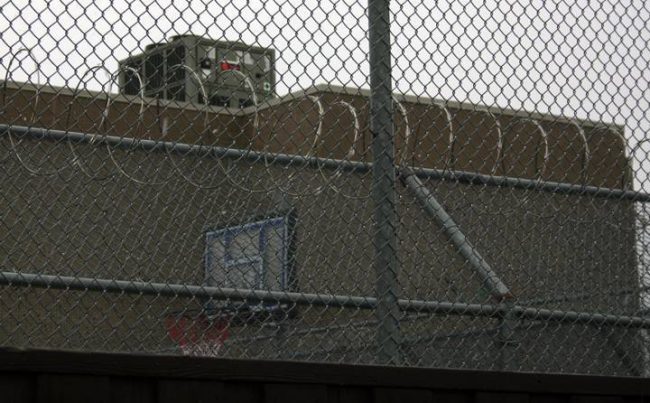Eight-year-old Aaliya was on her recess at school when CBSA officers picked up her up and took her to a detention centre where her mother Naimah, arrested the same day, was being held.

This was in February 2015 — the start of a year-long stay in the facility for the pair.
A few months into detention, Aaliya began suffering severe nosebleeds as a result of dry air in the facility. A nurse gave Naimah a jar of Vaseline, but it was twice confiscated by CBSA officers.
Then, when the nurse recommended that Aaliya be taken to the emergency room, officers refused to let her mother go with her. They eventually allowed Naimah to go — in handcuffs.
Eight months into her detention, Aaliya, who her mother says cried every day because she missed going to school, was diagnosed with severe depression and post-traumatic stress disorder.
READ MORE: Immigration detention ‘woefully unsuited for children,’ report charges
Between 2011 and 2015, over 200 Canadian-born children like Aaliya were held in the Toronto Immigration Holding Centre (IHC), the largest of its kind in Canada, according to a new report by the University of Toronto’s International Human Rights Program.
The report, titled “Invisible Citizens: Canadian Children in Immigration Detention,” states that dozens of Canadian children of non-status parents were held in that facility each year as de facto detainees or “guests” alongside formally detained children, in that time period.
They were held there without the benefit of legal safeguards that protect kids who have been detained formally, such as access to detention review hearings.

The report recommends that the government curb its reliance on detention, and consider alternatives such as community housing and supervision.
“We begged them to put me under house arrest so that my child could go to school,” Naimah told the researchers. “I will never understand what is the benefit of putting my child in detention for a year.”
The researchers say children are often detained because their parents are forced to choose between giving them up to child protection, or bringing them into detention with them.
READ MORE: Canadians less tolerant of uncontrolled immigration than Americans: poll
But these children are merely considered “guests” of the detention facility, not formally detained, and as a result are “legally invisible in the immigration detection system.”
This means they are excluded from monitoring safeguards that are set up between the Canadian Red Cross Society and the CBSA, putting them at risk of having their human rights violated.
“Children are surely the most innocent and defenceless among us. Yet Canada Border Services Agency (CBSA) detains both citizen and non-citizen children, without acknowledging detention of the former or adequately justifying detention of the latter,” Audrey Macklin, chair in human rights law at U of T, wrote in the report’s foreword.
Eighty-five per cent of Canadian children held in the Toronto IHC were younger than six years old, and nearly two-thirds were two years or younger, the data revealed.

One of these infants, Oscar, was five months old when his mother Mariame was arrested in October 2015.
Mariame told the report’s authors that CBSA officials pressured her to give Oscar away to a caregiver outside the detention centre, but she refused.
She claims that they later gave her baby formula that had been expired for over a year. When she complained about this at her detention review hearing, a hearing officer said the CBSA wasn’t at fault “because the baby could be elsewhere.”
READ MORE: Census 2016: Fertility takes back seat to immigration in Canada’s growth
The report warns that the trauma associated with detention could impact children’s long-term mental health, resulting in added burdens to health care, social welfare and educational programs.
To prevent this, the researchers suggest that families with children should not be detained unless the parents are considered a danger to the public. In all other cases, it recommends that families with children should be released or accommodated in community-based alternatives, with authorities able to check on them to ensure that they are adhering to immigration proceedings.
Organizations like the Canadian Red Cross and UN Refugee Agency should also receive increased access to immigration detention facilities, the study said.
The report acknowledges that the CBSA has “taken some initial steps to address the systemic issues within the immigration detention regime,” such as publishing detention statistics and improving access to medical care.
WATCH: Replacing immigration detentions

Over the next two years, the agency also plans to expand partnerships with NGOs to find alternatives to detention, while upgrading and adapting existing facilities to improve detainee well-being.
“The Canadian government and CBSA continue to take serious steps that have produced some initial progress,” Hanna Gros, the report’s author, said in a news release.
“But it’s important that they entrench these initial advances into law and practice so that Canada lives up to its reputation as a multicultural safe haven for refugees and migrants.”




Comments